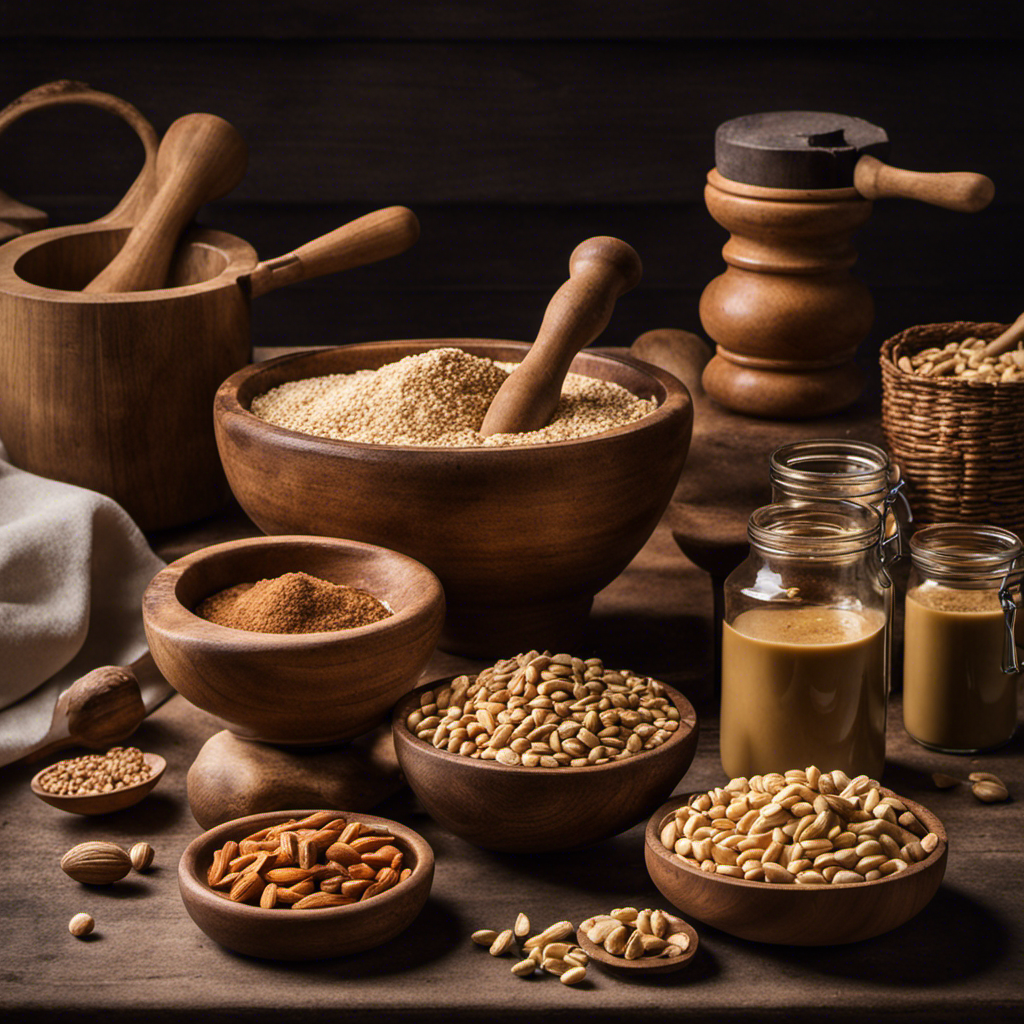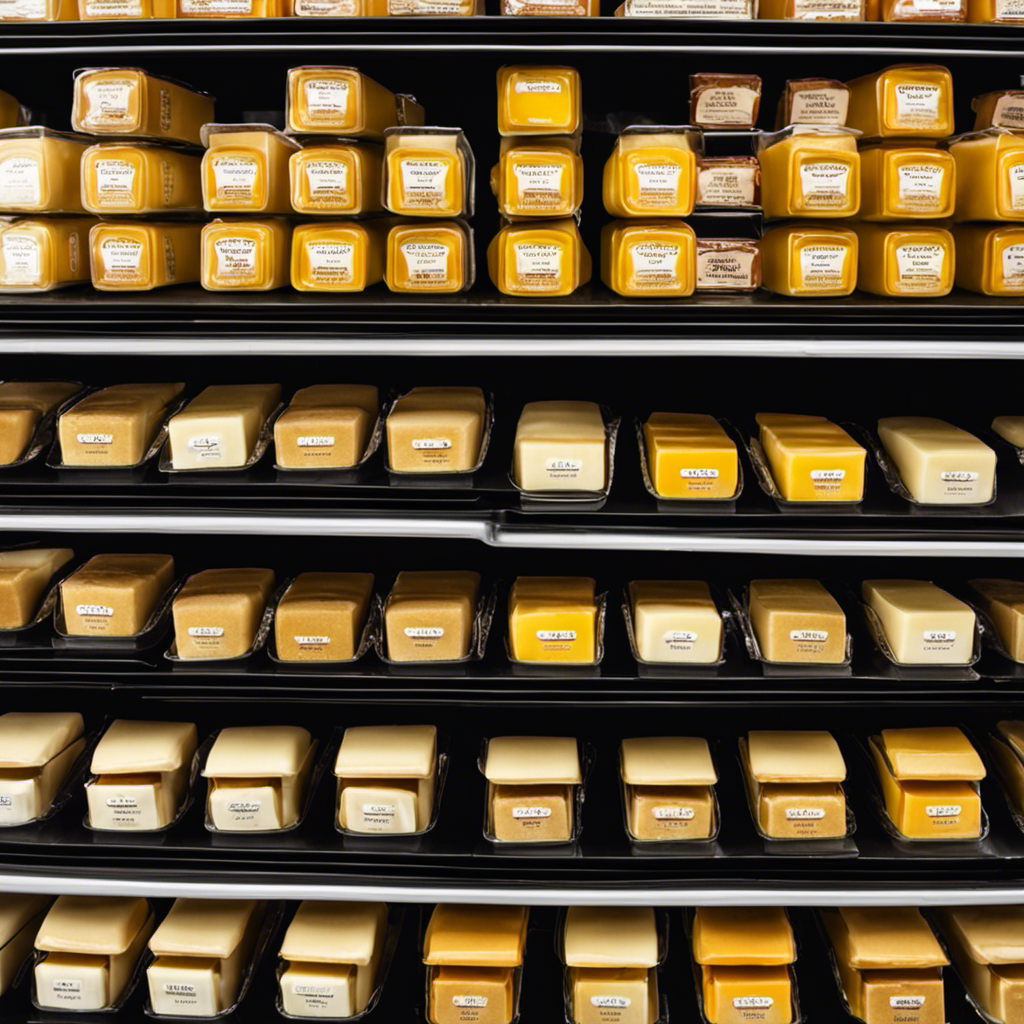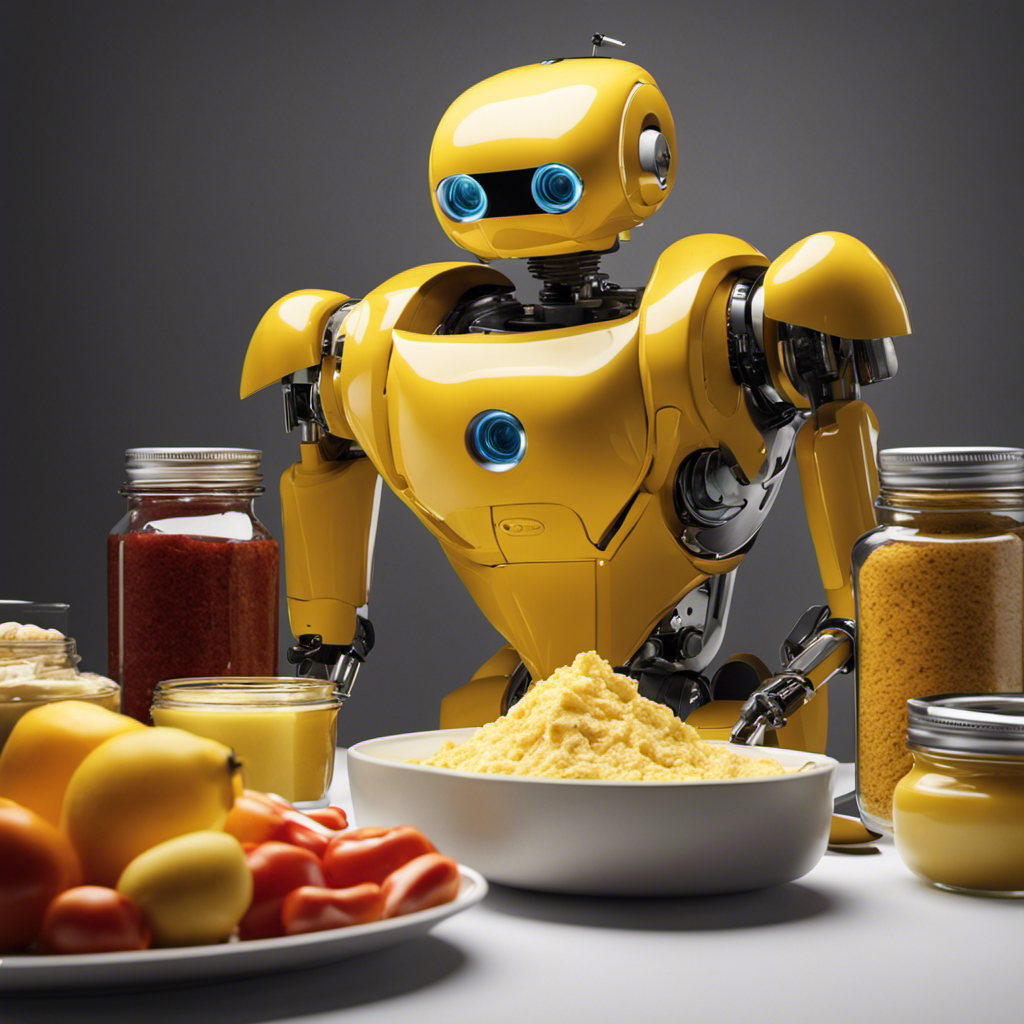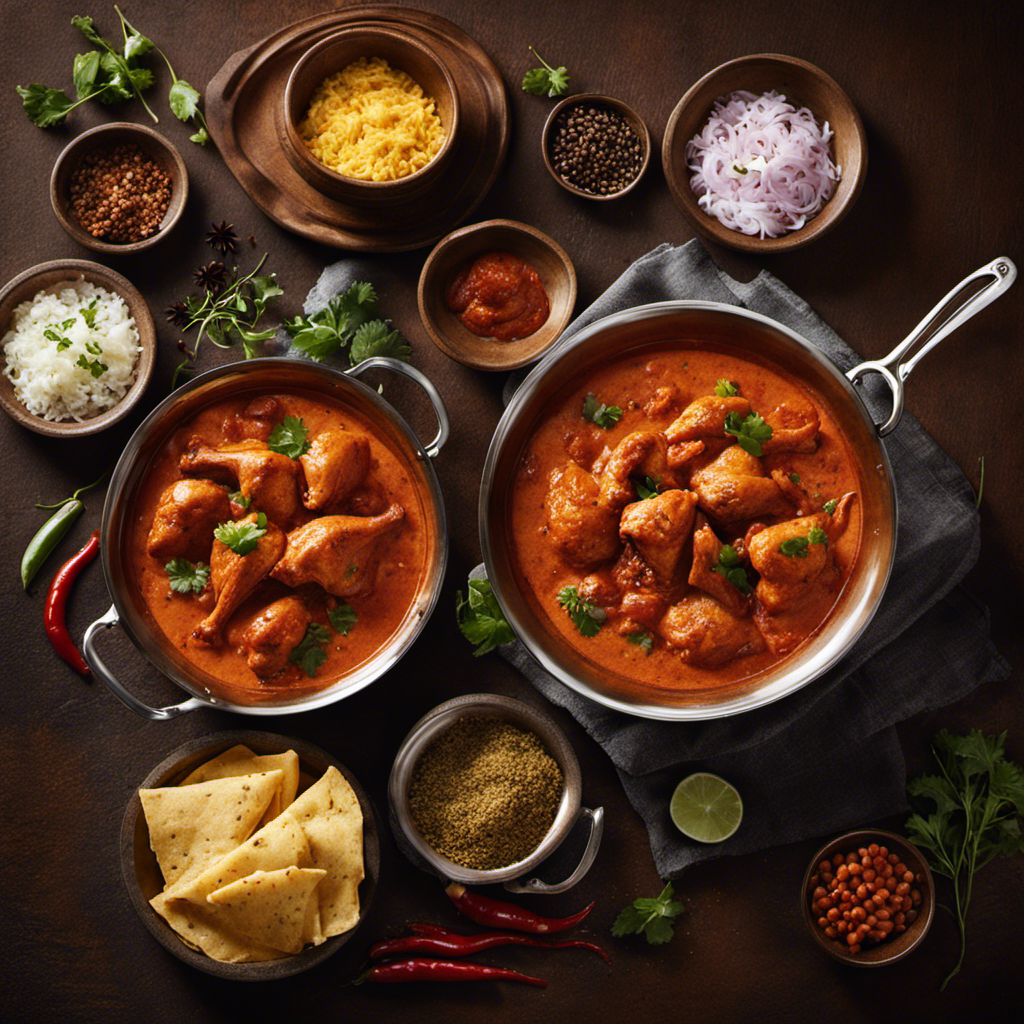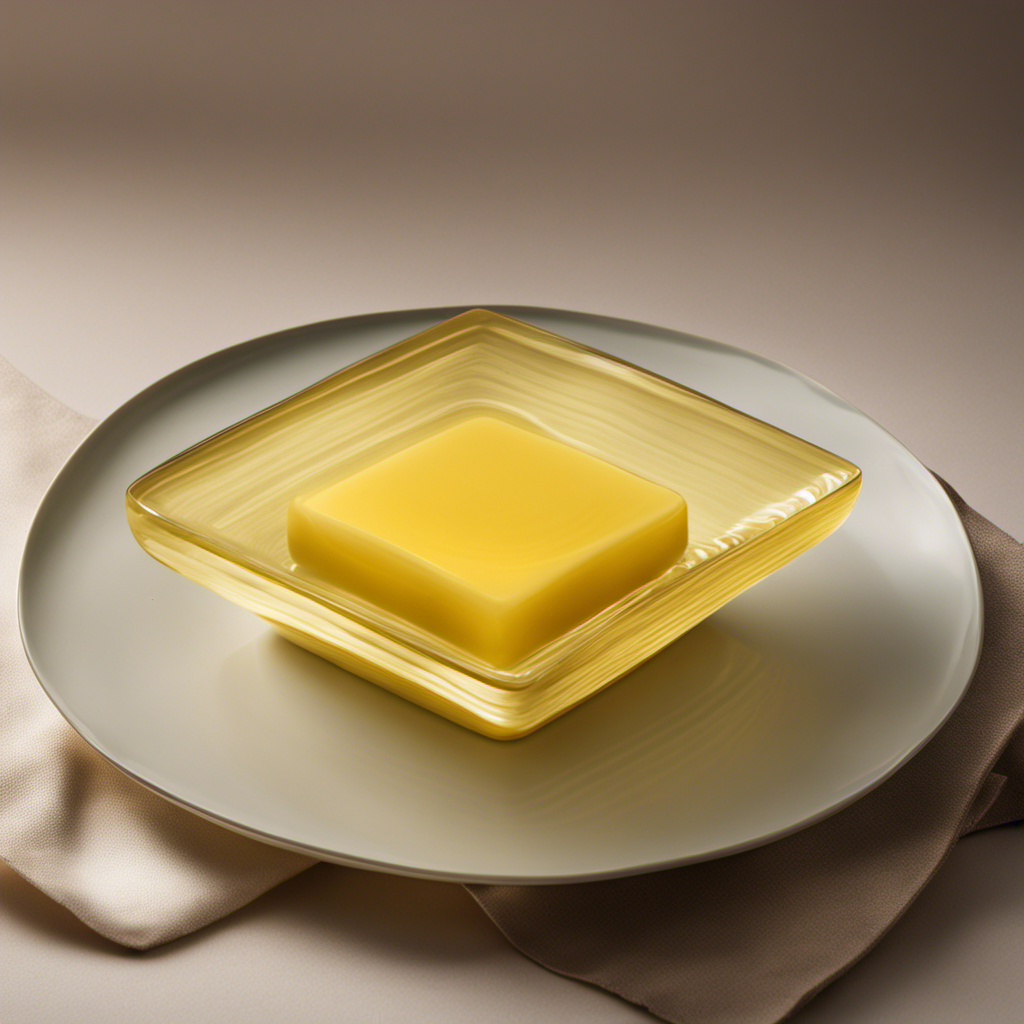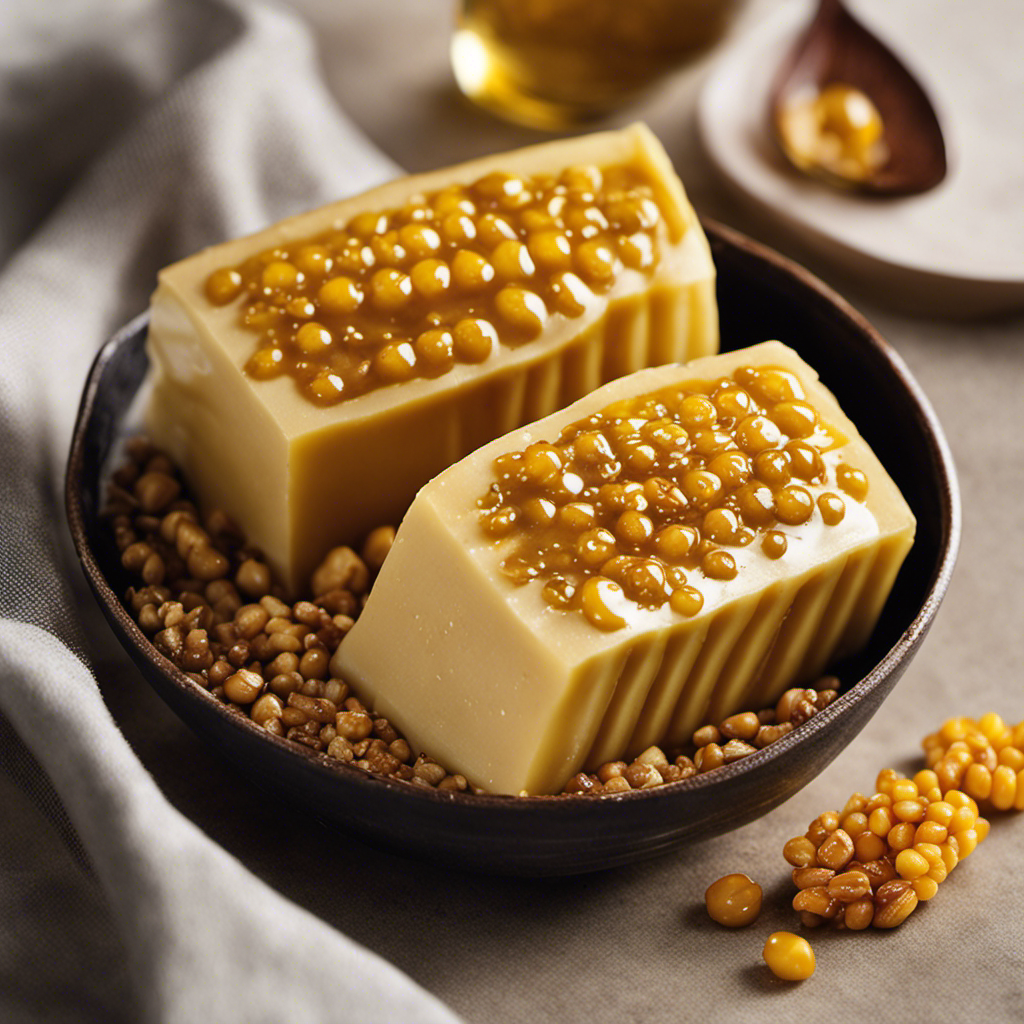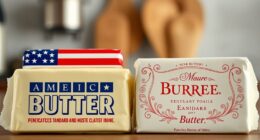While researching the origins of peanut butter, I discovered something fascinating. The question of who truly invented peanut butter appears to be more complex than I initially thought.
Through my thorough investigation, I uncovered the early discoveries and origins, the ancient roots of peanut butter, and the influence of African cuisine.
Additionally, I delved into the innovations in peanut processing and the significant contributions of George Washington Carver.
Join me as we explore the commercialization of peanut butter and unravel the mystery of its true inventor.
Key Takeaways
- Peanut butter dates back to the Aztecs and Incas, who ground roasted peanuts into a paste-like consistency.
- George Washington Carver revolutionized peanut cultivation techniques and contributed to the development of sustainable farming practices.
- Peanut butter became a commercial product in the late 19th century and transitioned from a homemade treat to a widely accessible product.
- Peanut butter is a good source of protein, healthy fats, and essential vitamins and minerals, and offers various health benefits.
Early Discoveries and Origins
You might be curious to know that early discoveries and origins of peanut butter date back to the Aztecs and Incas. The Aztecs and Incas were known to grind roasted peanuts into a paste-like consistency, which was then used in a variety of dishes and recipes.
These early recipes included mixing the peanut paste with cocoa, honey, and even chili peppers to create unique and flavorful concoctions. The cultural significance of peanut butter for the Aztecs and Incas cannot be understated. It was not only a staple food in their diets but also held religious and ceremonial importance.
The Aztecs believed that peanuts were a sacred food, associated with fertility and abundance. The Incas, on the other hand, considered peanuts to be a symbol of riches and power. These early discoveries and cultural significances laid the foundation for the widespread popularity of peanut butter in modern times.
The Ancient Roots of Peanut Butter
When it comes to the historical origins of peanut butter, it is important to understand that it is not a recent invention.
In fact, the roots of peanut butter can be traced back to ancient civilizations such as the Aztecs and Incas, who ground roasted peanuts into a paste-like consistency.
Over the centuries, this early form of peanut spread evolved and adapted, eventually leading to the creation of the peanut butter we know today.
Historical Origins of Peanut Butter
If you’re curious about the historical origins of peanut butter, it was invented by George Washington Carver in the late 19th century. However, the cultivation of peanuts can be traced back even further. Early civilizations in South America cultivated peanuts as early as 3,500 years ago. These ancient cultures recognized the nutritional benefits of peanuts, which are rich in protein, healthy fats, and fiber. Today, peanuts continue to be a popular and nutritious food source. To illustrate the nutritional benefits of peanuts, here is a table:
| Nutrient | Amount per 100g |
|---|---|
| Protein | 25.8g |
| Fat | 49.2g |
| Fiber | 8.5g |
As you can see, peanuts are a great source of protein, healthy fats, and dietary fiber, making them a valuable addition to a balanced diet.
Evolution of Peanut Spread
To understand the evolution of this spread, it’s interesting to note that peanut butter as we know it today didn’t exist until the late 19th century. Prior to that, roasted peanuts were popular, but the idea of grinding them into a smooth, spreadable consistency took some time to develop.
Here are three key factors that contributed to the evolution of peanut spread:
-
Invention of the peanut mill: In 1903, Dr. Ambrose Straub patented the first peanut mill, which made it easier to grind peanuts into a smooth paste.
-
Health benefits: As people became more aware of the health benefits of peanuts, including their high protein and healthy fat content, the demand for peanut butter grew.
-
Recipes and innovations: Over the years, various peanut butter recipes and innovations have emerged, such as adding honey or chocolate, creating different flavors and textures.
These factors set the stage for the popularity and versatility of peanut butter that we see today.
Now, let’s explore the influence of African cuisine on the development of peanut butter.
The Influence of African Cuisine
The influence of African cuisine can be seen in the diverse flavors and ingredients used in creating peanut butter. African countries have a rich culinary tradition that incorporates peanuts in various ways. Peanuts are a staple crop in many African countries, and they have been a part of their cuisine for centuries. Africans have mastered the art of grinding peanuts into a smooth paste, which forms the basis of peanut butter. Additionally, African cuisines often use spices like chili, ginger, and garlic to add depth and complexity to their dishes. These flavors have found their way into peanut butter recipes, giving it a unique and tantalizing taste. The African influence on peanut butter is undeniable and has contributed to its popularity around the world.
With the introduction of peanuts to the Western world, innovations in peanut processing began to emerge.
Innovations in Peanut Processing
You can explore the various innovations in processing peanuts, which have led to the creation of a wide range of peanut-based products. These advancements in peanut processing have not only given rise to the popular peanut butter we know today but have also paved the way for alternative options for those with dietary restrictions or preferences.
Here are three notable innovations in peanut processing:
-
Roasting: Roasting peanuts enhances their flavor and creates a rich, nutty taste that is perfect for spreads like peanut butter. Modern-day peanut butter brands use specialized roasting techniques to achieve the desired flavor profile.
-
Grinding: The process of grinding peanuts into a smooth, creamy consistency is essential for making peanut butter. Innovations in grinding technology have made it easier and more efficient to produce peanut butter on a large scale.
-
Blending: To create peanut butter alternatives, such as almond or cashew butter, peanuts are blended with other nuts or ingredients to achieve different flavors and textures.
These innovations in processing peanuts have revolutionized the way we enjoy peanut-based products, offering a wide variety of options for consumers. From traditional peanut butter to unique alternatives, the possibilities are endless.
These advancements set the stage for George Washington Carver’s contributions to peanut research and his impact on the peanut industry.
George Washington Carver’s Contributions
George Washington Carver’s research and innovations greatly impacted the peanut industry, opening up new possibilities for peanut-based products. His extensive research on peanut cultivation techniques revolutionized the way peanuts were grown and harvested.
Carver focused on developing sustainable farming methods that increased peanut yields and improved the quality of the crop. Through his experiments and studies, he discovered the importance of crop rotation, which helped prevent soil depletion and enhanced peanut growth.
Carver also introduced innovative practices such as intercropping, where peanuts were grown alongside other crops like sweet potatoes. This not only maximized land utilization but also provided farmers with diversified sources of income.
Carver’s dedication to improving peanut cultivation techniques not only transformed the peanut industry but also empowered farmers with sustainable and profitable practices.
The Commercialization of Peanut Butter
Peanut butter became commercially available in the late 19th century when entrepreneurs began selling it in grocery stores. This marked a significant milestone in the history of peanut butter, as it transitioned from a homemade treat to a widely accessible product.
The commercialization of peanut butter opened up new opportunities for its consumption, leading to the development of various peanut butter recipes that are still enjoyed today. From classic peanut butter and jelly sandwiches to decadent peanut butter cookies and smoothies, the possibilities are endless.
Additionally, peanut butter is known for its health benefits. It is a good source of protein, healthy fats, and essential vitamins and minerals. Incorporating peanut butter into a balanced diet can support heart health and aid in weight management.
Frequently Asked Questions
How Did Peanut Butter Become Popular in the United States?
Peanut butter became popular in the United States due to its invention impact and historical background. It gained popularity for its taste, versatility, and nutritional value. It became a staple in American households and continues to be a beloved spread today.
Are There Any Health Benefits Associated With Consuming Peanut Butter?
There are numerous health benefits associated with consuming peanut butter. It is rich in protein, fiber, and healthy fats, which can help with weight management, heart health, and blood sugar control.
What Are Some Popular Uses for Peanut Butter Besides Being Used as a Spread?
Peanut butter is not only a delicious spread, but it can also be used in a variety of ways. From peanut butter desserts like cookies and brownies to savory peanut butter recipes like satay sauce, the possibilities are endless!
How Did the Invention of Machinery Impact the Production of Peanut Butter?
The impact of automation and efficiency improvements on the production of peanut butter is significant. With the invention of machinery, the process became faster and more streamlined, leading to increased productivity and a higher quality end product.
What Are Some Common Misconceptions or Myths About the Invention of Peanut Butter?
Common misconceptions about the historical origins of peanut butter include the belief that it was invented by George Washington Carver. However, peanut butter actually has a longer history, dating back to the Aztecs in Mexico.
Conclusion
In conclusion, the journey of peanut butter’s invention has been a fascinating one, filled with rich history and innovation.
From its ancient roots to the influence of African cuisine, peanut butter has evolved over time, thanks to the advancements in peanut processing.
George Washington Carver’s contributions cannot be overlooked, as his experiments revolutionized the industry.
Today, peanut butter is widely commercialized, bringing joy to millions of taste buds.
It’s safe to say that this creamy spread has a truly remarkable story, making it an essential part of our culinary world.
